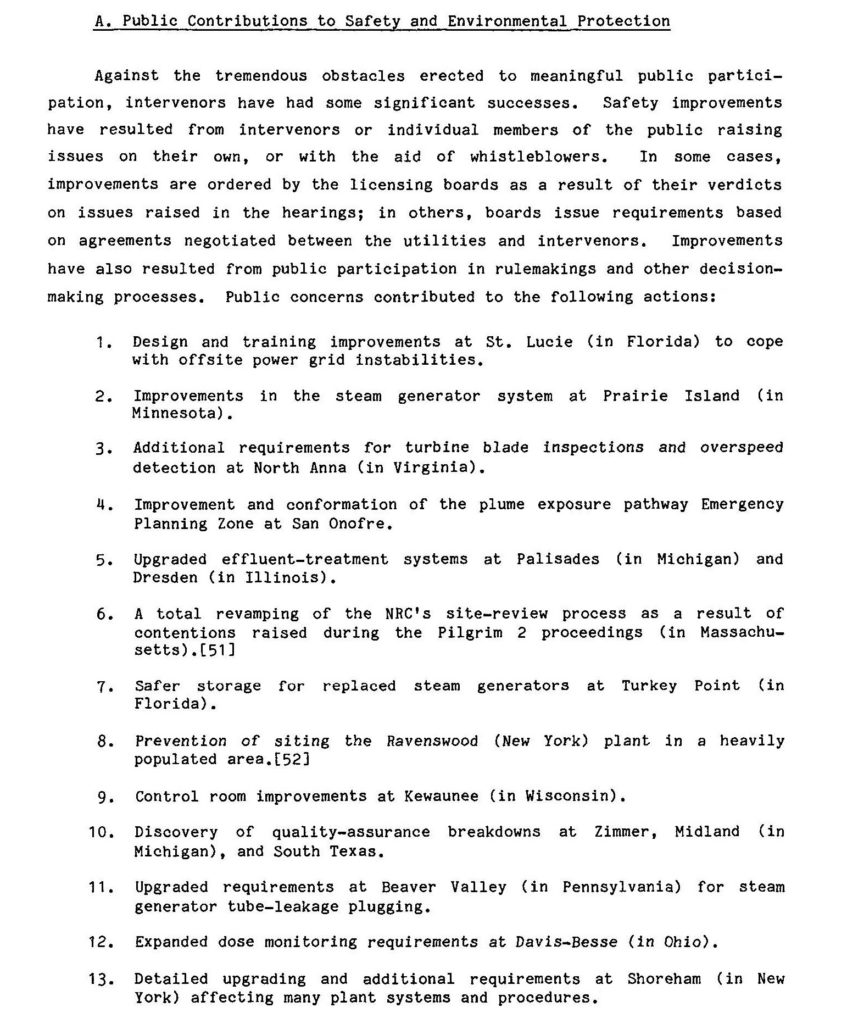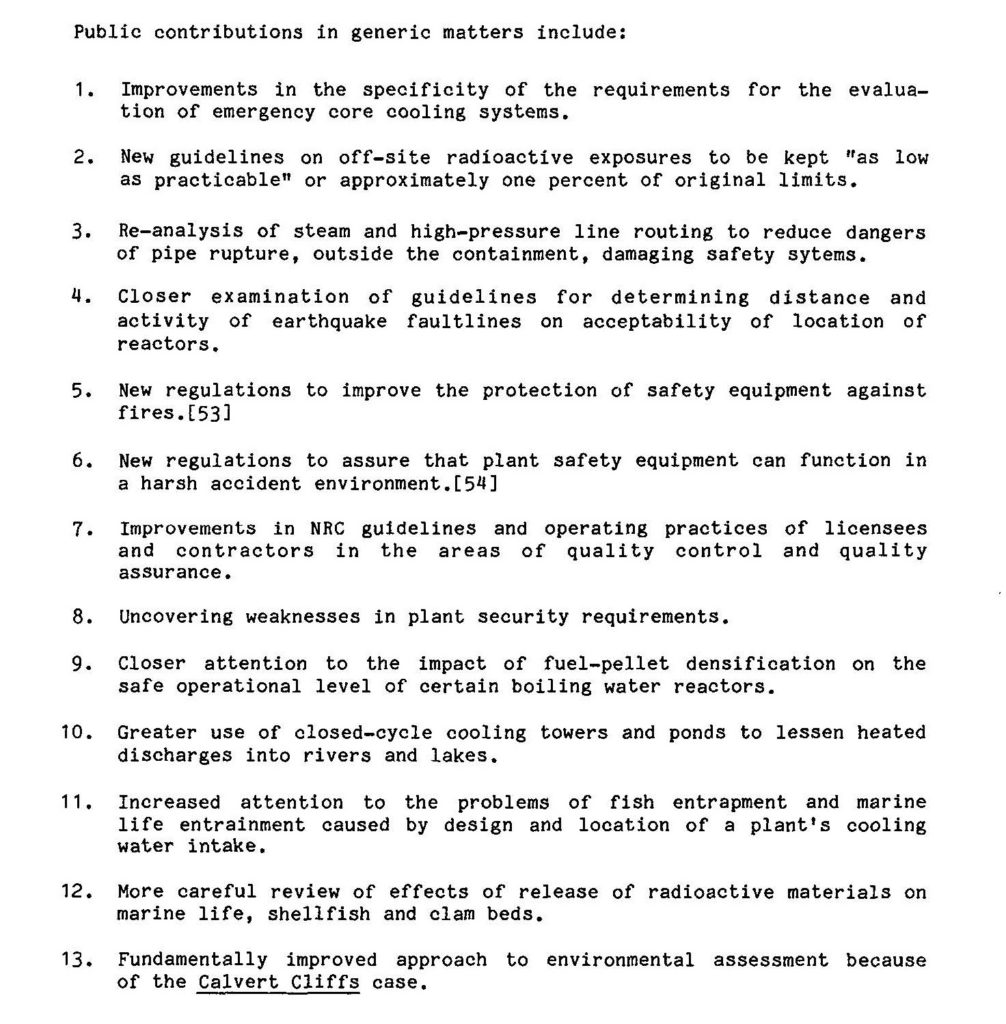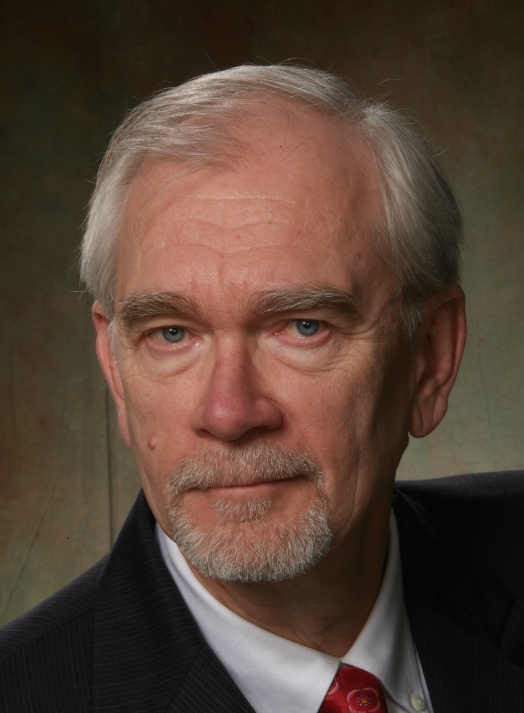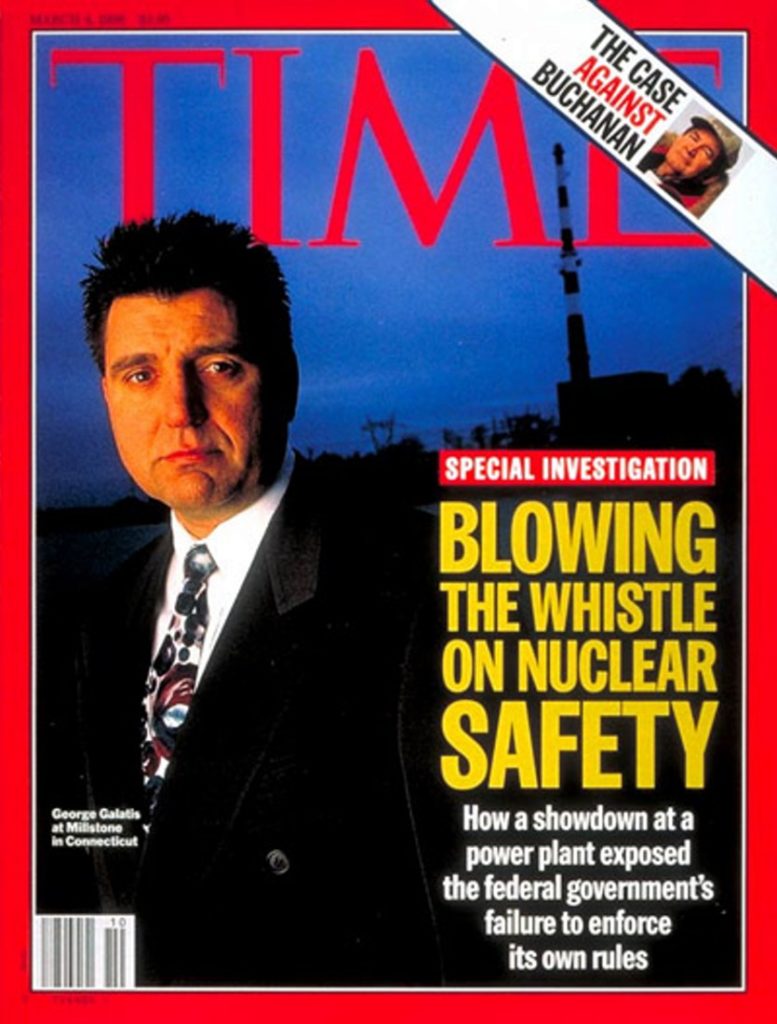Disaster by Design/ Safety by Intent #57
Safety by Intent
Continuing the series initiated with Disaster by Design #47, this commentary describes efforts that yielded public safety improvements. But this commentary approaches the subject from a perspective differing from prior commentaries. While still discussing improvements in public safety, this commentary focuses on safety improvements achieved by the public.

Fig. 1 (click to enlarge) (Source: Union of Concerned Scientists)
Safety Second
More than a decade before I joined UCS, the organization published “Safety Second: A Critical Evaluation of the NRC’s First Decade” in February 1985. (f you cannot find this book in your local library, at Amazon, or on the web, send me an email and I’ll reply with a digital copy.)
Chapter Three of the book, titled “The Public as Adversary,” opened with a quote by NRC Commissioner James K. Asselstine—“It is absolutely amazing, the lengths to which the Commission with go to avoid finding that a party is entitled to a hearing on an issue.” After summarizing several confrontational nuclear plant licensing proceedings, the chapter had a subsection titled “Public Contributions to Safety and Environmental Protection.”
The subsection listed 13 safety improvements at individual nuclear plants achieved by the public’s interventions in licensing proceedings (Fig. 1). Several cases involved the public championing concerns raised by whistleblowers who had voiced these same concerns to owners and/or the NRC without success.
The subsection listed another 13 safety improvements achieved generically across the fleet of operating nuclear plants by the public’s efforts (Fig. 2).

Fig. 2 (click to enlarge) (Source: Union of Concerned Scientists)
Considering that “Safety Second” examined only a single decade (1975-1984), 26 safety improvements achieved by the public is impressive—averaging nearly three improvements annually.
Those outcomes become even more admirable when you consider the situation faced by the public intervenors. Many have regular jobs and tackle the mind-numbing technical jargon, endless acronyms, and baffling legal lexicon on their own time and at their own expense. If their efforts prevail, their unselfish efforts return no compensation other than the satisfaction of making their communities safer and more secure.
Safety Improvements since Safety Second
Shortly after I joined UCS in October 1996, Ray Shadis of the Friends of the Coast invited me to serve on a panel at a meeting they planned in Wiscasset, Maine on November 19, 1996, to discuss the recent report issued by the NRC’s Independent Safety Assessment Team (ISAT). The NRC sent the ISAT to Maine Yankee at the request of then-Governor Angus King. The ISAT only examined four of the dozens of safety systems at the plant and chronicled many serious problems in their 70-plus page report before concluding the plant was operating safely. I accepted Ray’s invitation and went to Maine for what was my first public speaking role representing UCS.
The efforts by Friends of the Coast and several other public interest groups in Maine transformed the ISAT’s report into a To Do list of things to fix by the plant’s owner. It was a long and expensive list—in May 1998, the company announced its Board of Directors voted to permanently close Maine Yankee rather than pay for the safety fixes.
Over the years, I have had the pleasure of working with many citizens and representatives of local public interest groups. They consistently reminded me that the American form of democracy works best when it is not a spectator sport. They got off the couch and into the game, even though the game is seldom played on a level field and it’s often hard to discern the officials from the opposing teams. Despite the daunting challenges, they demonstrate absolutely amazing persistence and resilience.
I wish I could acknowledge all the safety improvements achieved by the public the past two decades. Instead, I will cite a small sampling to illustrate the results achievable with persistence and passion.
Paul Gunter

Fig. 3 Paul Gunter (Source: Beyond Nuclear)
Paul Gunter, Director of the Reactor Oversight Project at Beyond Nuclear, probably showed the power of one person by single-handedly derailing a tentative agreement reached between the NRC and plant owners. In the wake of the March 1975 fire at the Browns Ferry Nuclear Plant in Alabama, the NRC adopted regulations intended to better protect against fire hazards. The regulations essentially required that owners step through their plants one room at a time postulating a fire that damaged all equipment and cables inside it. The owners’ evaluations had to show that enough equipment located outside the fire room survived to safely cool the reactor core. If not, owners had to relocate equipment or install additional equipment until it was true for all rooms of the plant.
In the late 1990s, NRC inspectors discovered that most of the nuclear reactors operating in the United States, including those at Browns Ferry, did not meet the fire protection regulations. Instead of using equipment that would not be damaged in a fire, owners took credit for workers racing to the end of burned electrical cables and manually operating equipment damaged by the fire. The regulations permitted such manual actions, but only after being formally reviewed and approved by the NRC. Most of the reactors relied on unapproved manual actions that had taken the agency decades to discover.
Meetings between the NRC staff and industry representatives revealed that hundreds, if not thousands, of exemption requests would have to be submitted to the NRC and approved by the agency for all of the illegal manual actions.
Fearful that it lacked the resources needed to process so many exemption requests, the NRC hatched a plan with industry to rapidly issue a new regulation that would permit manual actions that met certain criteria. Such a regulation would retroactively approve all manual actions satisfying the newly imposed criteria.
Paul attended a public meeting on November 12, 2003, between NRC and industry where the draft regulation was discussed. To say that the criteria in the draft regulation were vague would understate the situation. Basically, the draft language would permit any and all manual actions as long as it was “feasible” they could be successfully performed. The draft language would permit more than a dozen manual actions that had to be completed within 30 minutes as long as a dry run of those steps by someone who had rehearsed them many times was able to simulate taking all the steps in 29 minutes and 59 seconds. The draft language contained zero requirements to ensure that all workers who might someday be required to tackle the task was as fit, fast and rehearsed as Demo Worker.
Paul shot down this trial buffoon with this short statement: “It’s feasible that I could go out of this meeting and go out and become a nuclear engineer. I don’t think that that’s likely, but if offers up the same concerns of your choice of words.”
The NRC discarded the loosey goosey “feasible” criterion almost immediately. The NRC developed definitive criterion that appears in the final regulations. Thanks, Paul!

Fig. 4 George Galatis (Source: TIME Magazine)
George Galatis
The efforts by George Galatis certainly resulted in significant safety improvements at Millstone (CT) and in how the NRC oversees safety. George raised concerns with how spent fuel was being handled at Millstone. When neither the company nor the NRC did anything about the concerns (unless shrugging and ignoring counts), George formally petitioned the NRC to keep the three reactors at Millstone shut down for 60 days—the equivalent of a time-out given to misbehaving children. Millstone’s owner contested the petition, but should have readily accepted it. Once George appeared on the cover of TIME magazine, the reactors were shut down. Unit 1 never restarted. Unit 2 restarted more than three years later. And Unit 3 restarted after more than two years. Thanks, George!
Ann Harris and Curtis Overall
Ann Harris and Curtis Overall worked at the Tennessee Valley Authority’s Watts Bar Nuclear Plant during its construction. While performing their assigned tasks, both found problems they reported to management as required by plant procedures. Both experienced harassment and intimidation—including death threats by phone and mail—for having done their jobs and following procedures. TVA fired both workers, allegedly as part of Reductions in Force and not for having raised safety concerns.
Ann and Curtis filed complaints with the U.S. Department of Labor (DOL) contending that TVA violated the Energy Reorganization Act. The DOL’s Administrative Law Judges ruled in their favor.
Ann and Curtis literally put their jobs, and arguably their lives, on the line for safety. Their efforts resulted in lots of safety improvements at Watts Bar that likely otherwise would not have happened. Thanks, Ann! Thanks, Curtis (posthumously)!
Nuclear Information and Resource Service
The Nuclear Information and Resource Service (NIRS) under the leadership of the late Michael Mariotte demonstrated the might of a small organization teaming with grassroots activists and environmental attorneys when they opposed the proposal by Louisiana Energy Services to build and operate a uranium enrichment plant in Louisiana. NIRS partnered with the Citizens Against Nuclear Trash (CANT) to win one of the nation’s first courtroom verdicts on environmental justice grounds. Thanks, NIRS!
Project on Government Oversight
The 9/11 tragedy questioned whether the nation’s nuclear power plants were adequately protected against sabotage attempts. The NRC held many meetings with plant owners about security vulnerabilities and upgrades to lessen them.
These meetings were closed to the public for legitimate concerns that public discussion of security capabilities and shortcomings could unintentionally aid those planning us harm.
The Project on Government Oversight (POGO) crafted a novel and effective way of putting a spotlight on security problems without also handing the bad guys a blueprint for nuclear nightmares. On September 12, 2002, POGO released “Nuclear Power Plant Security: Voices from Inside the Fences.” POGO interviewed security force personnel at more than a dozen nuclear plants and identified common themes: under-staffed, under-trained, under-equipped, and under-paid defenders.
The post-9/11 security regulations adopted by the NRC contained measures on security officer training and qualifications. In addition, a parallel rulemaking process resulted in a final regulation that limited the working hours of security force personnel as protection against impairment due to fatigue. Thanks, POGO!
Galaxy of Public Stars
These summaries illustrate a small sampling of the many times that efforts by the public resulted in nuclear safety improvements. The efforts of the following individuals and public interest groups could just as easily have been summarized (listed alphabetically):
Jessica Azulay of the Alliance for a Green Economy
Anna Aurilio of the Alliance for Nuclear Accountability
Rochelle Becker, David Weisman, and John Geesman of the Alliance for Nuclear Responsibility
Garry Morgan, Gretel Johnston, and Sandy Kurtz of the Bellefonte Efficiency & Sustainability Team
Linda Gunter, Kevin Kamps, and Cindy Folcker of Beyond Nuclear
Lou Zeller of the Blue Ridge Environmental Defense League
Debbie Grinnell and Sandy Gavutis of the C-10
Diane Turco of the Cape Downwinders
Deb Katz of the Citizens Awareness Network
Keith Gunter, Ethyl Rivera, and Jessie Collins of the Citizens’ Resistance at Fermi-Two
Dan Hirsch of the Committee to Bridge the Gap
Paul Blanch of Connecticut
Nancy Burton of the Connecticut Coalition Against Millstone
Michael Keegan of Don’t Waste Michigan
Howard Lerner of the Environmental Law and Policy Center
Maggie and Arnie Gundersen and Carolina Aronson of Fairewinds Associates
Damon Moglen of the Friends of the Earth
Jim Riccio of Greenpeace
Manna Jo Greene of the Hudson River Sloop Clearwater
Arjun Makhijani and the Institute for Energy and Environmental Research
Pine duBois of the Jones River Watershed Association
Dale Bridenbaugh of MHB Technical Associates
Jane Swanson of the Mothers for Peace
Tom Cochran, Geoff Fettus, and Matthew McKinzie of the Natural Resources Defense Council
Clay Turnbull and Ray Shadis of New England Coalition on Nuclear Pollution
Mike Mulligan of New Hampshire
Mark Leyse of New York
Jim Warren and Mary MacDowell of the North Carolina Waste Awareness and Reduction Network (NC WARN)
Dave Kraft and Linda Lewison of the Nuclear Energy Information Service
Tim Judson, Mary Olson, and Diane D’Arrigo of the Nuclear Information and Resource Service
Glenn Carroll of Nuclear Watch South
Catherine Thomasson and Chuck Johnson of the Physicians for Social Responsibility
Mary Lampert of Pilgrim Watch
Allison Fisher and Tyson Slocum of Public Citizen’s Energy Program
Paul Gallay and Deborah Brancato of Riverkeeper
Tom Clements of the Savannah River Site Watch (and Savannah native)
Seacoast Anti-Pollution League
Susan Corbett of the Sierra Club’s South Carolina Chapter
Sara Barczak of the Southern Alliance for Clean Energy
Don Safer of the Tennessee Environmental Council
Eric Epstein and Scott Portzline of the Three Mile Island Alert
Norm Cohen of Unplug Salem
Vermont Public Interest Research Group
Marilyn Elie of the Westchester Chapter of the Citizens Awareness Network
Many thanks to many people for many safety improvements!
Disaster by Design
Nuclear safety is all about proper balancing.
Emergency core cooling systems are installed to restore the balance between the heat produced by the reactor core and the heat carried away by cooling water. An imbalance for too long results in reactor core overheating as Fermi Unit 1, Three Mile Island and Fukushima remind us.
Other emergency systems are installed to control the balance between neutrons released by atoms splitting in the reactor core. If this control is lost, the reactor power level can soar to disastrous levels as SL-1 and Chernobyl remind us.
Nuclear safety requires a similar balance between industry and public influence on the NRC. When the public’s thumb gets too heavy on the NRC’s regulatory scale, owners can spend money for measures that do not improve safety. Conversely, when the industry’s thumb tips the scale too much, necessary safety margins can be undercut.
This commentary shows that the public’s efforts have yielded nuclear safety improvements. Past commentaries have chronicled nuclear safety improvements achieved by industry’s efforts and other safety improvements gained through NRC’s efforts. Too much is at stake for all voices not to be heard and all perspectives not to be considered.
—–
UCS’s Disaster by Design/ Safety by Intent series of blog posts is intended to help readers understand how a seemingly unrelated assortment of minor problems can coalesce to cause disaster and how effective defense-in-depth can lessen both the number of pre-existing problems and the chances they team up.
